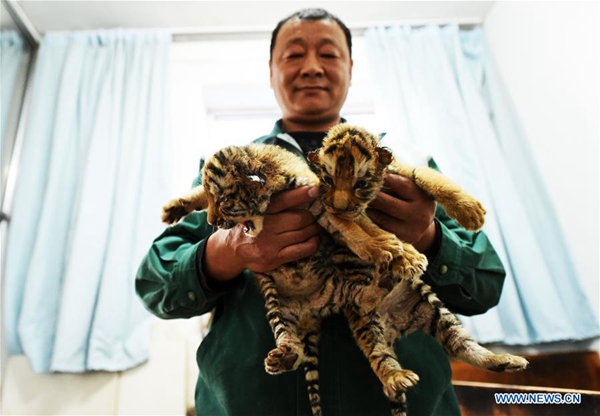|

|
|
A breeder checks two Siberian tiger cubs in the Hengdaohezi Feline Breeding Center in northeast China’s Heilongjiang Province, April 24, 2017. [Photo/Xinhua]
|
Chinese researchers are using artificial breeding to control the population of captive-bred Siberian Tigers and improve their genetic quality.
There are about 1,000 Siberian tigers at China Hengdaohezi Feline Breeding Center, the world’s largest breeding center for tigers in captivity. Researchers control the number of newborn cubs to about 100 every year.
“Not all adult Siberian tigers are fit for reproducing. If we do not control reproduction, the quality of the offspring will be affected,” said Liu Dan, chief engineer at the Siberian Tiger Park.
Researchers conduct DNA tests to select parents and to prevent inbreeding, he said.
Most Siberian tigers have more than one cub at a time. It is common for a mother tiger to give birth to three cubs at once, Liu said.
The oldest mother at the center is 15 years old. Some tigers can reproduce from the age of four until age 14, he said.
Researchers have also given the animals wildlife training.
“Wildlife training is an important way to maintain their quality. I hope one day we can release these captive-bred animals to the wild,” he said.
